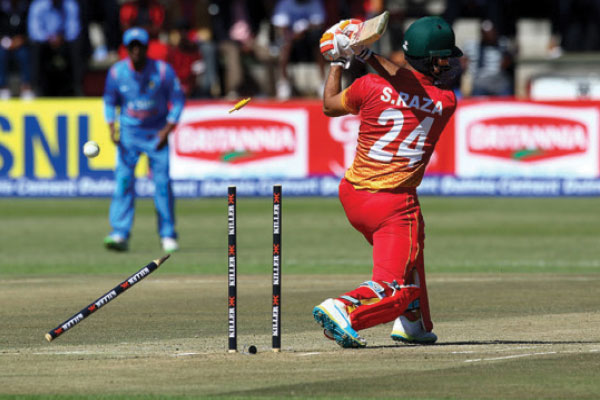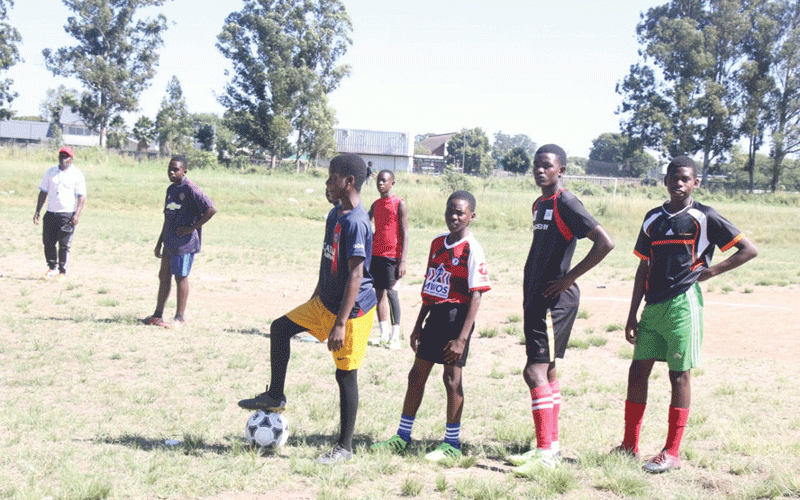
BY TIM MIDDLETON Cricket is a game that you can play anywhere. Now there will be some who will be desperate to disagree, arguing that a cricket square has to be incredibly well-prepared, manicured and treated while the field of play is much larger than most other sporting arenas. But, no, cricket can be played anywhere. Furthermore, cricket can be played at any time, day or night, winter or summer. Again, there will be many who will be quick to point out that cricket, more than other sports, needs a dry climate and good visibility. But, no, cricket can be played anytime! How is that possible?
Cricket can be played on car journeys to while away the time for young children, though it might be noted that Zimbabwe will not do so well in this format of cricket. As a means of distracting children from the long journey (“Are we there yet?”), parents over different generations have played cricket with their children whereby the child scores a run for every car that passes them in the opposite direction, two runs for any van, three for any motor-bike, four for a lorry and six for a fuel tanker (donkey carts can count as one run for a bye, tractors as one run for a wide) – if a bus comes in the other direction, then that is a wicket (as long as it is moving when the car passes it – if it is not, it is a ‘No Ball’ and therefore another run). Once ten wickets ‘fall’, we change teams and go again. Easy!
Cricket can be played in church as well, again for younger children who may not have the same concentration span as adults. This could be played during the sermon by giving one run for each time the preacher says “Christ”, two runs for every time the word ‘Church’ is used, three for any use of the word “Amen”, four runs when the preacher waves his arm across him and six runs when he raises both arms in the air – a Hallelujah moment, if any, for sure! A wicket falls, however, whenever the preacher raises his arm and finger, as an umpire does. Children should be warned however not to become so excited that they shout out “Howzat!” at any time! Church benefits from cricket!
Cricket can also be played in the classroom. It has been known for an English teacher to explain Shakespeare’s play ‘Hamlet’ in cricketing terms with pupils who loved and excelled in cricket. To declare or not to declare, that is the question! If the pupil can deliberate on that issue, he is likely to understand better Hamlet’s own specific dilemma. Cricket thus assists with critical thinking.
In his book called, ‘Cricket: The Game of Life’, Scyld Berry, in analysing the nature of the sport, makes the comment that “Bowling is the posing of problems; batting is the solving of them”. The batter must respond to what the bowler delivers; he does not know in advance what sort of ball he is going to face (though it may be pointed out that some suggestion might be provided by the sort of field the bowler has set). The bowler has numerous options up his sleeve, be it the bouncer, the slower ball, the spin (with all its many varieties with their glorious names) or whatever. Indeed, the bowler must try to work out what sort of ball should be delivered to confuse his opponent. The batter in turn must work out what is coming and deal with it, just as a child, when it comes to his own Tests, has to work out what question is being asked; he cannot just go into an exam and take an almighty swipe at the question, hoping that his answer may somehow connect with the question.
The batter in turn has to solve the problem, of defending his wicket, his integrity, his ability. Generally, he will judge each ball on its own merit though at times he will play a premeditated shot, by guessing where the ball is coming or moving into position to avoid the set of fielders at that time. Increasingly, too, batters are finding new and different ways to solve the problem; while in the past, we simply had the hook, drive, cut and sweep now we also have those plus the ramp, scoop, slog sweep, helicopter, reverse sweep and more. Cricket thus helps to develop creativity.
Cricket provides invaluable lessons in how to set and handle examination questions but it also serves to teach important lessons in how we handle problems in work and life. Of course, bowlers do also at times bat while sometimes batters do bowl, and such opportunities help them understand what is required from the other side. In such a way a teacher may get pupils to set suitable exam questions for other pupils, thereby seeing if they understand the concept being taught. Cricket certainly becomes a powerful teacher, be it in the car, church, classroom or square. Learn from it! Play!
- Tim Middleton is a former international hockey player and headmaster, currently serving as the Executive Director of the Association of Trust Schools Email: [email protected]
- Chamisa under fire over US$120K donation
- Mavhunga puts DeMbare into Chibuku quarterfinals
- Pension funds bet on Cabora Bassa oilfields
- Councils defy govt fire tender directive










